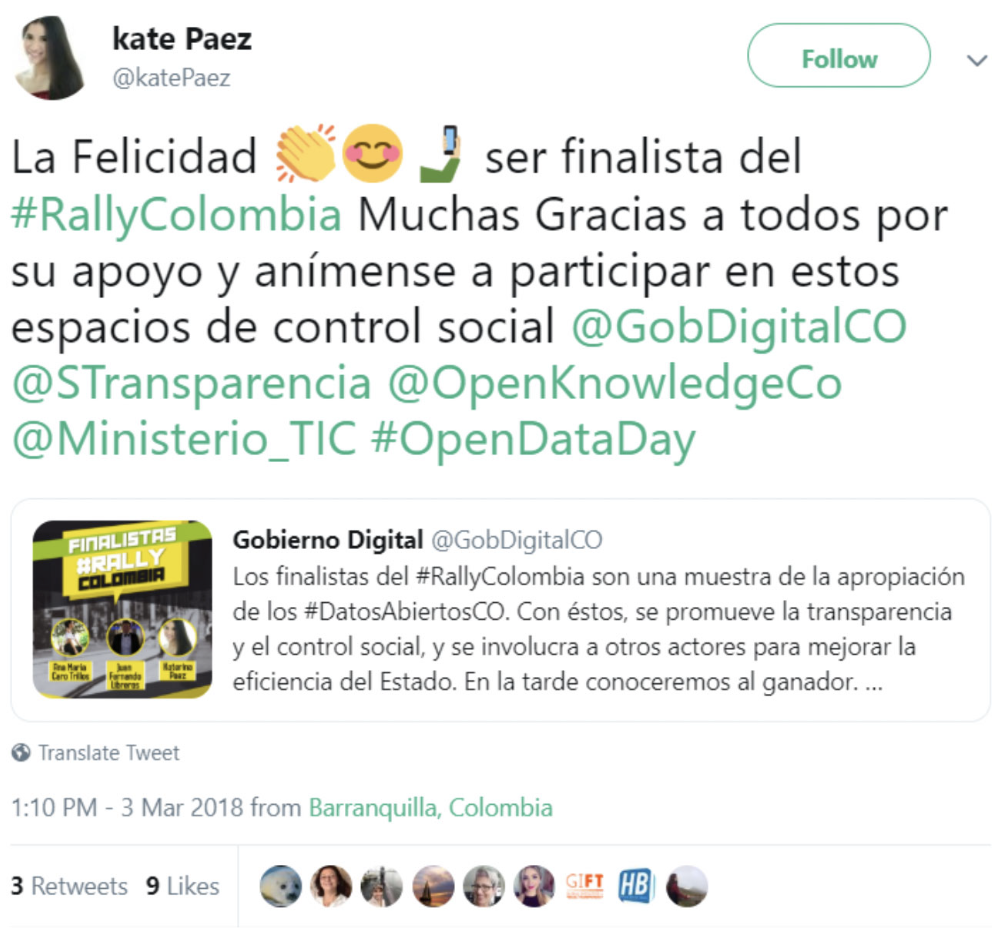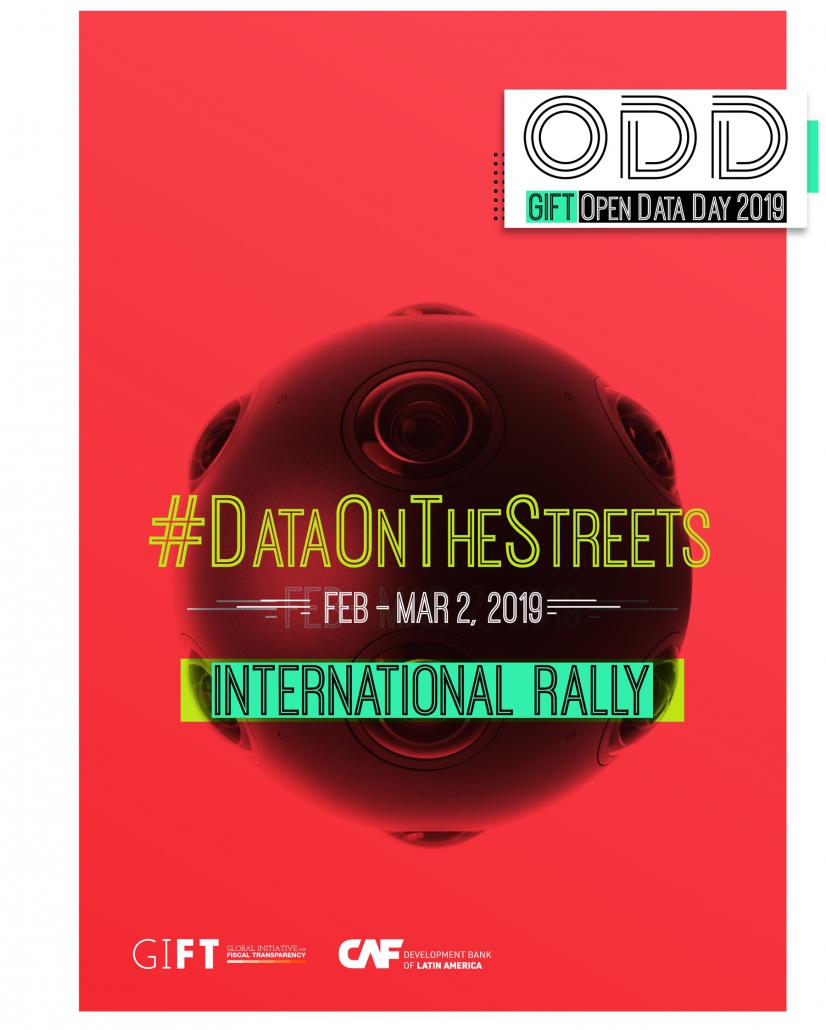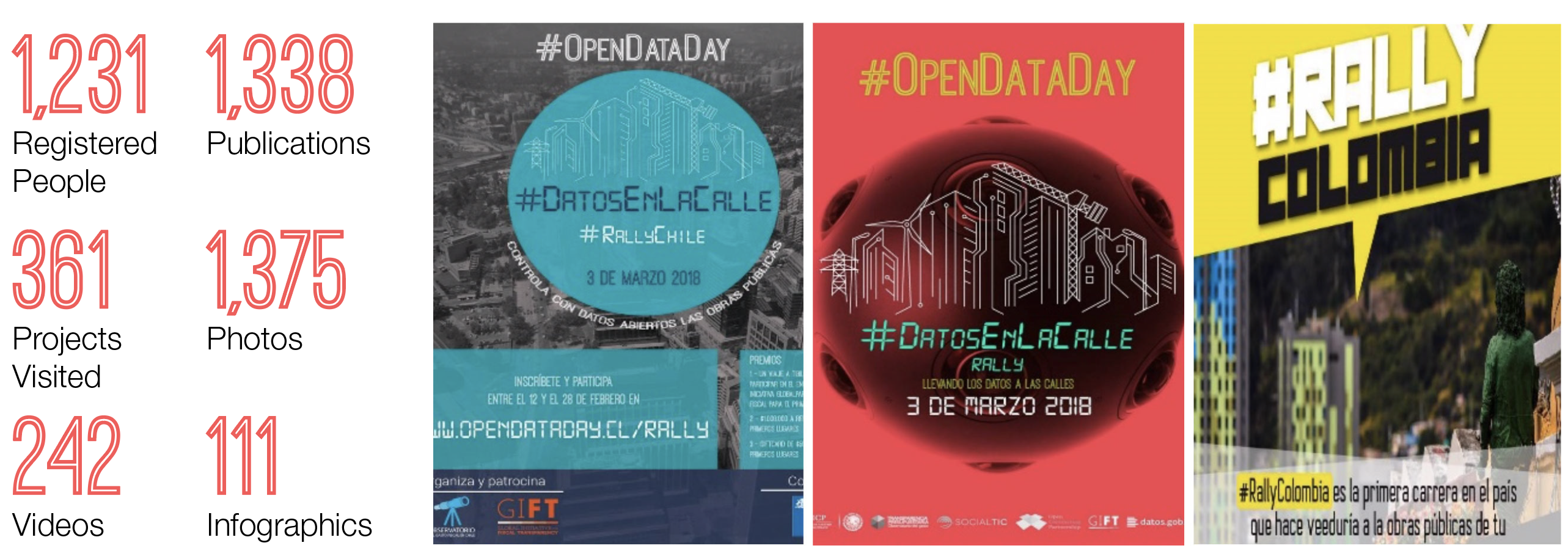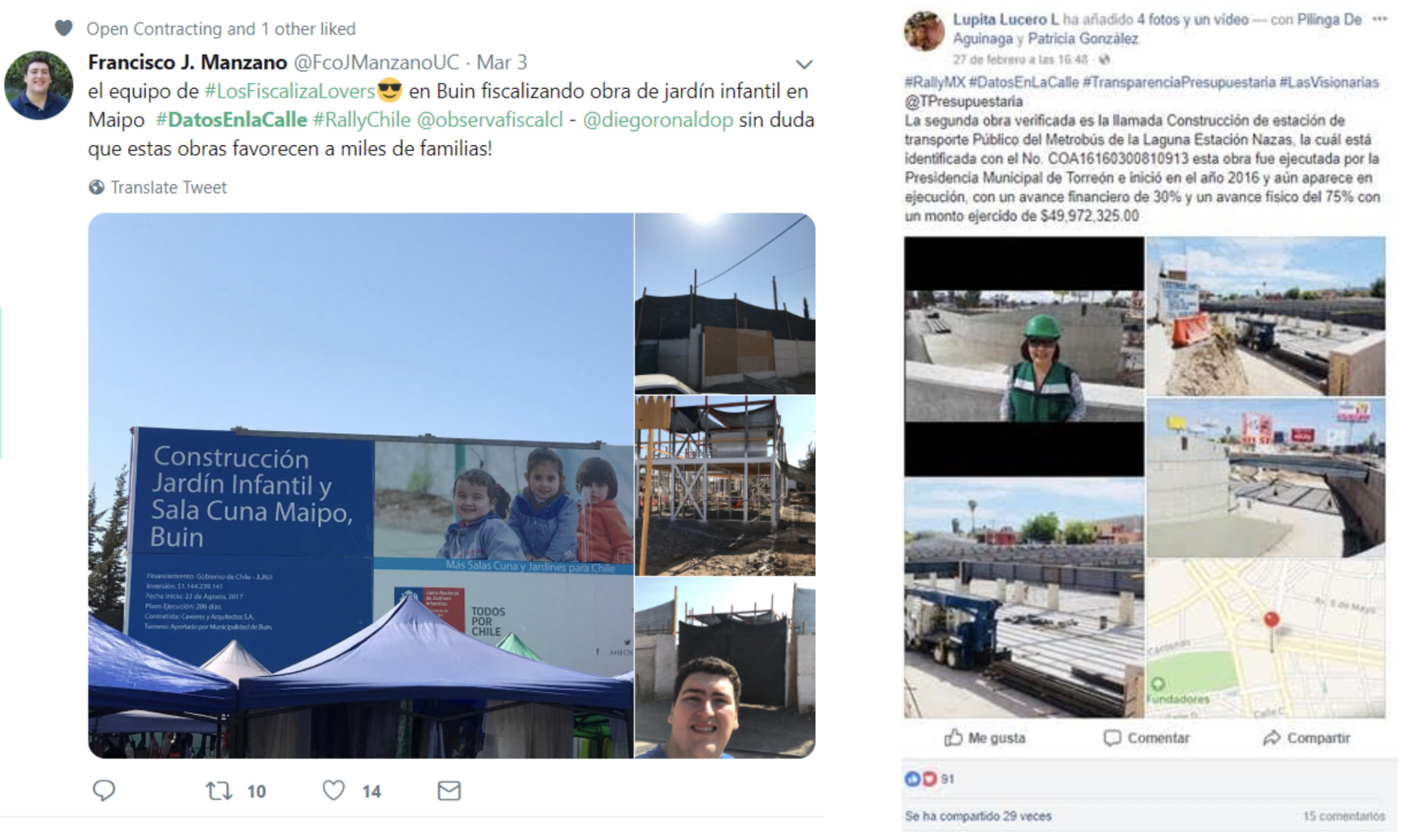The Rally is a great opportunity to invite the public to use the data generated by governments, go out to the streets and see how data reflects in their real life. It is a public participation process in the budget implementation phase through open data and digital tools, such as maps and visualizations.
How does it work?
- Governments, through their Ministry of Finance, Public Works or similar, and one or more Civil Society Organizations, launch an open invitation to participate in the Rally #DataOnTheStreets.
- People register to the event and go through the construction projects dataset or mapping platforms published and select the ones they want to visit.
- Participants go out on the streets and check the projects, comparing what they see on the dataset and what they see on the streets.
- Participants document their findings through social media (Facebook or Twitter), posting creatively and engaging their own network.
- Judges, representatives from government and civil society, choose the winners based on number of projects visited, creativity, engagement and, of course, extra points for data analysis.
- On Open Data Day, winners are announced!
How did it go in 2018?
The Rally started in the Ministry of Finance of Mexico in 2016, in 2018 it became international and three countries hosted their own rallies: Chile, Colombia and Mexico.
Why we like the Rally
Experience shows that participants tend to be non-data specialists, expanding the audience using open data. As opposed to hackathons and similar events.
It helps data literacy by bringing the knowledge and tools closer to the people to turn the data into useful information that can engage and build trust, accountability and better government-citizen communication.

What you need to host your own Rally?
- Open data of public constructions being built or finished from national or subnational level projects. The data must have: descriptive name of the project, geolocation, budget allocated to the project, financial progress, physical progress.
- If available, it is best to have the data paired with visualizations, such as maps and photos.
- A government and a civil society convener. The initiative can be initiated from any side, but it is important to work together.
- A team in charge of dissemination, answering participant questions, following posts and counting points.
- Let us know you want to host a Rally!
Important dates
- November 16th GIFT will open the generic operating rules of the Rally for comments, we are looking to improve last year operation. Each country can make adaptations as required, but the community will benefit from the co-creation of the general rules.
- November 30th closing comments and integrating a final version of the general rules.
- January-February 2019 country dissemination efforts (social media, events, radio, interviews).
- February 2019 beginning of the Rally, participants go to the streets.
- March 2nd, 2019 Open Data Day! End of participation and winner’s announcement.
Any question or further information?
Please contact Lorena Rivero at lorena@fiscaltransparency.net and 4 at tarick@fiscaltransparency.net



